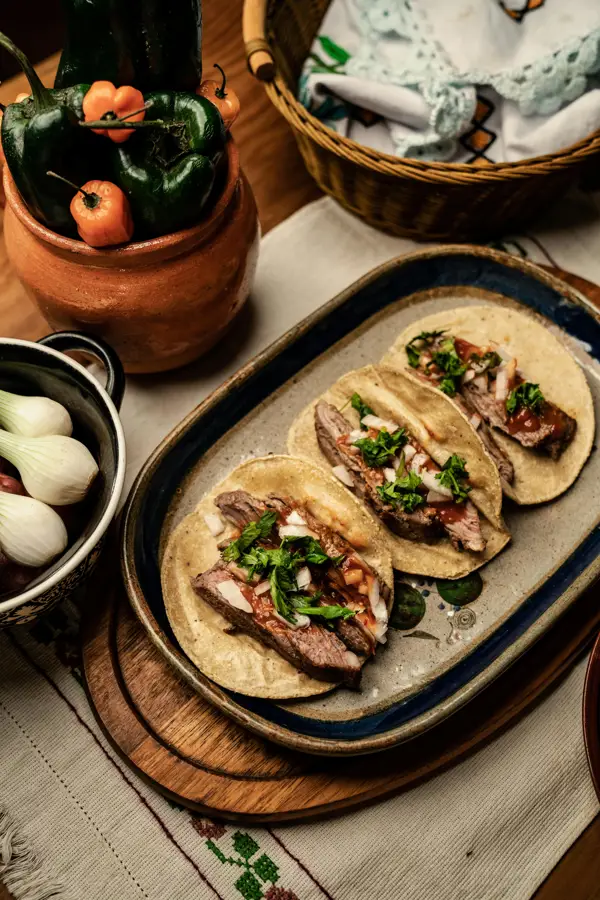Black bean and corn salad, a vibrant and flavorful dish, boasts a history as rich and complex as its ingredients. While pinpointing a precise origin is difficult, its core components – black beans and corn – have deep-rooted significance in various cultures. Corn, a staple crop originating in Mesoamerica, has been cultivated for over 9,000 years, playing a central role in the diets and traditions of civilizations like the Aztecs and Mayans. Similarly, black beans, a legume prized for its nutritional value and versatility, have a long history in Latin American cuisine, where they feature prominently in stews, soups, and side dishes. The combination of these two powerhouse ingredients likely emerged as a natural progression, reflecting the ingenuity of culinary traditions in adapting readily available, nutritious foods.
The modern iteration of black bean and corn salad, however, is often credited to the influence of Southwestern and Tex-Mex cuisine. The rise in popularity of Southwestern-style cooking in the latter half of the 20th century saw the fusion of various indigenous ingredients and techniques, resulting in a variety of fresh and flavorful salads. The black bean and corn salad, with its bright colors and refreshing taste, quickly became a favorite, especially during warmer months. Its adaptability makes it a versatile dish; easily customizable with different herbs, spices, dressings, and additions like avocado, red onion, or bell peppers.
Beyond its deliciousness, black bean and corn salad offers significant nutritional benefits. Black beans are an excellent source of fiber and protein, contributing to satiety and digestive health. Corn provides essential vitamins and antioxidants. According to the USDA, a single cup of black beans contains over 15% of the recommended daily intake of fiber. This, coupled with the low-calorie nature of the dish when prepared with a lighter dressing, makes it a popular choice for health-conscious individuals. The salad’s increasing popularity is also reflected in its frequent appearance on restaurant menus and its numerous variations found in cookbooks and online recipes, highlighting its cultural significance and enduring appeal.
Ingredients and Measurements
This recipe yields approximately 6 servings of vibrant and flavorful Black Bean and Corn Salad. Precise measurements are crucial for achieving the perfect balance of flavors and textures. Using a kitchen scale for weighing ingredients, especially the beans and corn, is highly recommended for consistent results.
Black Beans: We’ll be using 1 (15-ounce) can of black beans, rinsed and drained thoroughly. Thorough rinsing is essential to remove excess sodium and starch, which can affect the overall taste and texture of the salad. If you prefer a smoother texture, you can lightly mash about ⅓ of the beans with a fork before adding them to the salad. Alternatively, using 1 ½ cups of cooked black beans allows for flexibility if you prefer to cook your own.
Corn: For this recipe, we’ll use 1 (15-ounce) can of whole kernel corn, drained. Again, draining well is important to prevent a watery salad. Alternatively, you can use 2 cups of fresh or frozen corn kernels. If using frozen corn, ensure it’s fully thawed and drained before incorporating it into the salad.
Red Onion: ½ medium red onion, finely diced. Red onion adds a sharp, slightly sweet counterpoint to the other ingredients. Avoid over-dicing; slightly larger pieces retain their texture and flavor better. If you’re sensitive to strong onion flavors, you can soak the diced onion in cold water for 10-15 minutes before adding it to the salad to mellow its pungency.
Bell Pepper: 1 medium bell pepper (any color), finely diced. A vibrant red or yellow bell pepper will add both color and sweetness. Choose a firm, brightly colored pepper for the best flavor and texture. Similar to the onion, avoid over-dicing to maintain a pleasing texture.
Cilantro: ½ cup of fresh cilantro, chopped. Cilantro provides a bright, herbaceous note that complements the other ingredients beautifully. If you dislike cilantro, substitute with parsley for a similar fresh, green element.
Lime Juice: 2 tablespoons of freshly squeezed lime juice. Freshly squeezed lime juice is crucial for achieving the right level of acidity and brightness. Avoid using bottled lime juice as it often lacks the fresh, vibrant flavor.
Olive Oil: 3 tablespoons of extra virgin olive oil. A high-quality olive oil will enhance the overall flavor profile of the salad. Taste the oil before using it; a fruity and peppery oil will complement the ingredients best.
Seasoning: 1 teaspoon of ground cumin, ½ teaspoon of chili powder, ¼ teaspoon of salt, and ¼ teaspoon of black pepper. Adjust seasoning to your preference. Start with the suggested amounts and add more to taste after the salad has been prepared.
Equipment List
Creating a delicious Black Bean and Corn Salad requires the right tools to ensure efficient and consistent results. While you might already have most of these items in your kitchen, having them readily available will streamline the process. This list details the equipment you’ll need, along with recommendations for optimal choices.
Large Mixing Bowls (2): You’ll need at least two large mixing bowls, preferably with a capacity of at least 5 quarts each. One bowl will be used for preparing the black beans and corn, and the second will be for combining all the salad ingredients. Choose bowls that are sturdy and non-reactive, like stainless steel or glass, to avoid any unwanted flavor interactions. Avoid using plastic bowls, especially if you’re making a large batch, as they can crack or warp under the weight.
Measuring Cups and Spoons: Accurate measurements are crucial for achieving the perfect balance of flavors. Invest in a set of standard and metric measuring cups and spoons. Ensure your measuring cups and spoons are clean and dry before use to prevent inaccurate measurements and potential clumping of ingredients.
Cutting Board and Sharp Knife: A sturdy cutting board, preferably made of wood or plastic, is essential for chopping vegetables like onions, bell peppers, and cilantro. Use a sharp knife for efficient and safe chopping. A dull knife requires more force and increases the risk of accidents. Choose a chef’s knife (8-10 inches) for versatility.
Colander: A colander is necessary for draining the canned black beans and corn. A fine-mesh colander is recommended to prevent smaller corn kernels from escaping during rinsing. Make sure your colander is large enough to comfortably hold the contents of the cans.
Can Opener: You’ll need a can opener to open the cans of black beans and corn. Choose a can opener that is easy to use and clean. Electric can openers are convenient, but a manual one works just as well.
Serving Bowl: Once the salad is prepared, you’ll need an attractive serving bowl to present your culinary creation. The size of the serving bowl should be appropriate for the amount of salad you’ve made. Consider the aesthetic appeal of the bowl, as it will be a focal point on your table.
Optional: Food Processor (for chopping): While a sharp knife is sufficient, a food processor can significantly speed up the chopping process, particularly if you’re making a large batch of salad. If using a food processor, pulse the ingredients briefly to avoid over-processing and creating a mushy texture.
Preparation of Ingredients
Begin by preparing your black beans. For this recipe, we’ll use 1 (15-ounce) can of black beans. Open the can and drain the beans thoroughly in a colander. Rinse the beans under cold running water for at least 30 seconds to remove any excess sodium and starch. This step significantly improves the overall flavor and texture of the salad. Set the rinsed beans aside in a large bowl.
Next, we’ll tackle the corn. You can use either 1 (15-ounce) can of whole kernel corn, drained, or 2 cups of fresh corn kernels. If using fresh corn, cut the kernels off the cob using a sharp knife. If using canned corn, drain it well in a colander, ensuring to remove as much liquid as possible. This prevents a watery salad.
Now for the vegetables! We’ll need 1 red bell pepper, 1/2 red onion, and 1/2 cup of chopped cilantro. For optimal flavor and texture, finely dice the red bell pepper. Remove the stem, seeds, and membranes before chopping. Similarly, finely chop the red onion. Smaller pieces ensure even distribution throughout the salad and prevent overpowering onion chunks. For the cilantro, roughly chop it – you want some texture, not a complete puree.
Proper knife skills are crucial here. Use a sharp knife to ensure clean cuts and prevent bruising the vegetables. If you’re uncomfortable with knife work, consider using a food processor with a chopping attachment, but be careful not to over-process the vegetables. You want them to retain some texture and not become mushy.
Finally, prepare your jalapeño pepper (optional). If adding heat, use about 1/4 to 1/2 of a jalapeño pepper, depending on your spice preference. Remove the seeds and membranes for less heat. Finely mince the jalapeño before adding it to the salad. Always wash your hands thoroughly after handling jalapeños to avoid accidental burning.
Once all the ingredients are prepped, you can proceed to the next step of making the delicious black bean and corn salad dressing.
Making the Dressing
The success of this Black Bean and Corn Salad hinges heavily on a vibrant and flavorful dressing. This recipe utilizes a lime-cilantro base, offering a zesty counterpoint to the sweetness of the corn and the earthiness of the black beans. We’ll be making a simple, yet impactful dressing that perfectly complements the salad’s ingredients.
Begin by gathering your ingredients: 1/4 cup fresh lime juice (approximately 2 large limes), 1/4 cup chopped fresh cilantro, 2 tablespoons extra virgin olive oil, 1 tablespoon red wine vinegar, 1 teaspoon honey or agave nectar (adjust to your sweetness preference), 1/2 teaspoon ground cumin, 1/4 teaspoon salt, and a pinch of freshly ground black pepper. Having all your ingredients pre-measured and ready to go will streamline the process.
In a small bowl, whisk together the lime juice, red wine vinegar, honey (or agave), cumin, salt, and pepper. Whisk vigorously to ensure the honey or agave is fully incorporated and the salt and pepper are evenly distributed. This initial whisking emulsifies the dressing, creating a more cohesive and flavorful blend.
Next, slowly drizzle in the olive oil while continuing to whisk. Whisking slowly allows the oil to emulsify properly with the acidic components, preventing separation. A well-emulsified dressing will coat the salad evenly and enhance its overall texture and appearance.
Finally, gently stir in the chopped cilantro. Avoid over-mixing at this stage, as it can bruise the cilantro and dull its vibrant green color. Taste the dressing and adjust the seasoning as needed. You might want to add a little more honey for sweetness, lime juice for tartness, or salt and pepper to taste.
Professional Tip: For a smoother dressing, you can briefly pulse the ingredients (excluding the cilantro) in a blender or food processor before whisking in the cilantro. This is especially helpful if you prefer a completely smooth and consistent texture. Remember to taste and adjust seasoning after blending as well.
Once you’re satisfied with the flavor and consistency of your dressing, set it aside until you’re ready to toss it with the black bean and corn salad. The dressing is best used fresh, but leftovers can be stored in an airtight container in the refrigerator for up to 3 days.
Combining Ingredients
Once your black beans, corn, and red onion are prepped (refer to previous sections for details), it’s time to bring them together to create the vibrant base of our black bean and corn salad. We’ll be combining these ingredients in a large bowl, ensuring even distribution of flavors and textures. For a 4-serving salad, start with a bowl that’s at least 12 inches in diameter; this provides ample space for mixing without crushing the ingredients.
Begin by adding 1 (15-ounce) can of black beans, rinsed and drained thoroughly. Thorough rinsing is crucial to remove excess sodium and starch, which can make the salad taste bland or gummy. Follow this with 2 cups of corn kernels – either fresh, frozen (thawed), or canned (drained). If using frozen corn, ensure it’s completely thawed before adding to prevent unwanted chilling of the other ingredients and maintaining a consistent temperature throughout the salad.
Next, incorporate 1/2 cup of finely chopped red onion. Red onion adds a lovely sharpness and color contrast, but be mindful of the quantity; too much can overpower the other flavors. If you prefer a milder onion flavor, you can soak the chopped onion in cold water for 10-15 minutes before adding it to the salad. This helps to mellow out its pungency.
Now for the crucial step of gentle mixing. Avoid over-mixing, which can lead to broken beans and a mushy texture. Use a large spoon or spatula and gently fold the ingredients together, ensuring everything is evenly distributed. Work from the bottom of the bowl to incorporate all the ingredients without applying excessive pressure.
At this stage, you can assess the moisture content of the salad. If it seems overly wet from the beans or corn, you might consider adding a tablespoon or two of your chosen dressing (see the next section on dressings) to help absorb some of the excess liquid. This will also help the flavors meld together more effectively. Remember, the goal is a vibrant, flavorful salad with a pleasant texture, not a soggy mess.
Once all ingredients are combined and the moisture level is adjusted, set the bowl aside and prepare your chosen dressing. We recommend preparing the dressing separately and then adding it just before serving to prevent the salad from becoming soggy. This allows you to enjoy the freshest possible flavors and textures.
Chilling (if required)
Chilling your black bean and corn salad is entirely optional, but highly recommended for optimal flavor and texture. A well-chilled salad offers a refreshing contrast to the richness of the black beans and corn, and allows the flavors to meld beautifully. Whether you chill it depends on when you plan to serve it and your personal preference.
If serving immediately: Chilling isn’t necessary if you’re serving the salad right after preparation. However, even a short 15-30 minute rest in the refrigerator can improve the taste by allowing the flavors to mingle.
If serving later: For the best taste and texture, chilling for at least 2 hours is ideal. This allows the salad to fully cool, preventing a soggy or lukewarm experience. For maximum flavor development, chilling for 4-6 hours or even overnight is recommended.
Proper chilling technique: To ensure even cooling and prevent bacterial growth, use an appropriate container. A large, shallow glass or plastic bowl with a lid is perfect. Avoid using metal containers, as they can affect the taste of some ingredients. Ensure the salad is completely cooled to room temperature before placing it in the refrigerator. Placing warm food directly into the refrigerator can raise the temperature of other items and potentially lead to spoilage.
Quantity considerations: The chilling time might need slight adjustment depending on the quantity of your salad. A smaller batch (serving 2-4) will chill faster than a larger one (serving 8 or more). For larger batches, consider using a larger, shallower container to promote even cooling.
Preventing sogginess: Add any delicate ingredients like fresh herbs or avocado just before serving if you are chilling the salad for an extended period. These ingredients can release excess moisture and become soggy if chilled for too long. To maintain optimal texture, dress the salad just before serving, rather than beforehand. The dressing can cause the vegetables to become waterlogged if left to sit for an extended time.
Safety first: Remember to always chill your salad promptly, especially if using perishable ingredients such as fresh cilantro or red onion. Do not leave the salad at room temperature for more than two hours to prevent bacterial growth.
Recommendations
For the best flavor, it is recommended to prepare this Black Bean and Corn Salad at least 30 minutes before serving to allow the flavors to meld. This allows the lime juice to brighten the beans and corn, and the cilantro to infuse its fresh aroma throughout the salad. If making ahead, store it properly (see below).
This vibrant salad makes a fantastic light lunch or side dish. Serve it alongside grilled chicken or fish for a complete and satisfying meal. It also pairs beautifully with grilled halloumi cheese, tacos, or as a topping for baked sweet potatoes. Consider serving it with tortilla chips for scooping up the delicious mixture. For a more substantial meal, add some cooked quinoa or brown rice.
Storage: Store leftover Black Bean and Corn Salad in an airtight container in the refrigerator for up to 3 days. The flavors might deepen slightly over time, but the texture might change after a few days. It’s best enjoyed fresh.
Nutritional Information (per serving, approximate): Calorie count will vary based on specific ingredients and portion size, but a typical serving of this salad contains approximately 250-300 calories. It’s a good source of fiber, protein (from the black beans), and vitamins (particularly vitamin C from the bell peppers and vitamin A from the corn). Note: This is an estimate and the exact nutritional content will depend on the specific ingredients used and portion size. For precise nutritional information, use a nutrition calculator with your specific ingredient measurements.
To enhance the flavor profile, consider adding a pinch of red pepper flakes for a touch of heat, or a tablespoon of your favorite vinaigrette for extra depth of flavor. Feel free to experiment with different herbs, such as chopped chives or parsley, in place of or in addition to the cilantro. You can also add other vegetables like diced red onion or avocado for additional texture and flavor. Remember to adjust seasoning to your personal preferences.





